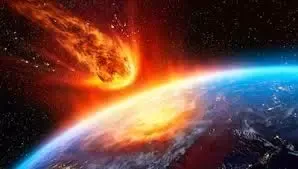
What are Venus’s co-consequence meteorite?
The co-creator meteorite of Venus are rocks of space that revolve around the Sun along with the planet Venus, but do not roam in the orbit of Venus. Currently scientists have found about 20 such meteorites, including Trojan meteorite (who live in front of Venus or in the back orbit) and a quasi-mon. Their length is 460 feet i.e. more than 140 meters. This meteorite is considered mainly from the main meteorite strip between Mars and Jupiter. The Earth also has such co-creator meteorite, on which scientists are constantly doing research.
Why the threat to the Earth?
Venus is the closest neighboring planet in the Earth, and its close distance is about 25 million miles (4 million kilometers). Venus’s co-consequence meteorites generally live with Venus, but if their orbit changes due to gravity force, these meteorites can come to the Earth and pose a risk of colliding here. Scientists have studied the speed of these meteorites for 36,000 years through computer simulation. They found that some meteorites are in a low eccentricity orbit, which hides them in the brightness of the sun and makes them difficult to see.
What is eccentricity?
Eccentricity suggests how round or long the orbit of a meteorite or planet is. If the eccentricity is close to 0, the class is completely round, and the higher number refers to the long, oval orbit. Most of Venus’ meteorite is more than 0.38, so they can be seen when close to the earth. At the same time, meteorite with low eccentricity remain hidden in the brightness of the sun.
Is there any immediate danger?
Scientists have made it clear that at present, no known Venus co-consequence meteorite is going to hit the Earth soon. In some media reports, the claim like “conflict in a few weeks” is wrong. But he has also said that it is necessary to keep a constant watch on these meteorites. For example, in 2024, 2.3% of the conflict on a meteorite called 2024 YRR4 was stated, but later the possibility became completely zero. This type of monitoring is very important in future.
How can the Earth be saved?
According to scientists, we need better techniques to find and track the co-consequences of Venus. There are some proposed solutions for this:
New Observations: ‘Vera C. Rubin’ observatory, which will begin in July 2025, will help find these meteorites, although it will be challenging to see all meteorites due to the brightness of the sun.
Telescope in Venus’s orbit: Scientists are suggesting that a special telescope should be sent to the orbit of Venus, which can stay away from the brightness of the sun and see these hidden meteorites better.
Meteorite Deflection Technique: NASA’s Dart Mission was successful in 2022, in which a mission changed her orbit by colliding with meteorite demorphos. In future, such techniques will remove meteorites from the earth.
Indigenous technology: Techniques such as India’s ‘Gaganyaan’ mission can help protect against space monitoring and meteorite threats.
What will be the effect on India falling?
If a large meteorite falls into a densely populated area of India, there may be heavy destruction. According to scientific simulation, 140 meter long meteorite can make a pit of about 2.2 to 3.4 km wide. This confrontation will make 410 megatons equal to the TNT, which is millions of times more than the atomic bomb dropped on Hiroshima. Therefore, scientists and government agencies are taking steps to monitor and prevent such dangers.
conclusion
Venus’s co-creator meteorite may not be immediately threatened, but they can become a serious challenge for the Earth in the future. Therefore, it is necessary to discover, monitor and develop deflection techniques in time in time. For this, global cooperation and new techniques will be the key to our safety.